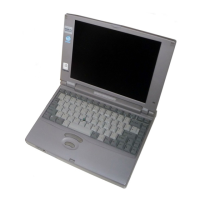
Do you have a question about the Toshiba 420CDT and is the answer not in the manual?
Backlit DSTN color LCD with 800x600 pixels, built-in controller for VGA/SVGA.
Backlit TFT color LCD with 800x600 pixels, built-in controller for VGA/SVGA.
Primary power source when AC cord is detached; recharges backup battery.
Maintains data for AutoResume; powered by AC, main battery, or backup battery.
Powers current date, time, and setup info when computer is off.
Lists components identified as Field Replaceable Units for troubleshooting purposes.
Lists necessary tools like diagnostic disks, drivers, and hardware for troubleshooting procedures.
Procedure to check the AC IN icon status for power connection and supply issues.
Procedure to check the Battery icon status for charging and battery pack issues.
Procedure to check system messages for errors related to RTC memory and configuration.
Procedure for cleaning FDD heads using a diagnostic program and cleaning kit.
Procedure to verify hard disk partition status using FDISK commands.
Procedure to execute the keyboard test within the diagnostic program.
Procedure to test the external CRT connection to diagnose internal LCD issues.
Procedure for cleaning the CD-ROM laser pickup lens with a lens cleaner.
Provides essential safety guidelines for disassembly and handling, including electrical and physical hazards.
Outlines procedures and environment checks before starting computer disassembly.
Details cable connector types and general points for reassembling computer components.
Lists necessary tools like screwdrivers, tweezers, ESD mats, and wrist straps for disassembly.
Step-by-step instructions for removing and installing the battery pack.
Instructions for removing and installing an optional PC card, including eject button use.
Instructions for removing and installing an optional memory module, involving screws and connectors.
Step-by-step guide for removing and installing the internal FDD, involving release lever and screws.
Instructions for removing and installing the CD-ROM drive, using release lever and screws.
Instructions for removing and installing the HDD, involving frame brace and screws.
Instructions for removing and installing the keyboard by releasing latches and disconnecting cable.
Instructions for removing and installing sub-battery and VGA board, including cable connections.
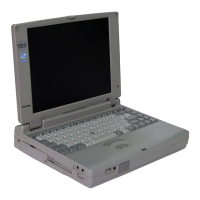
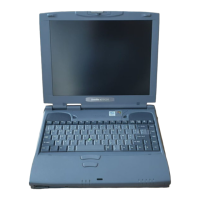

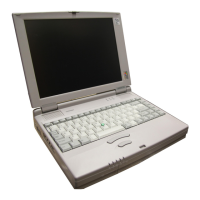



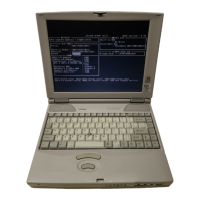
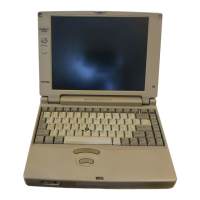


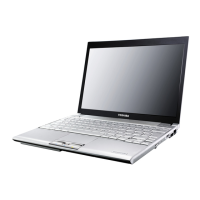
